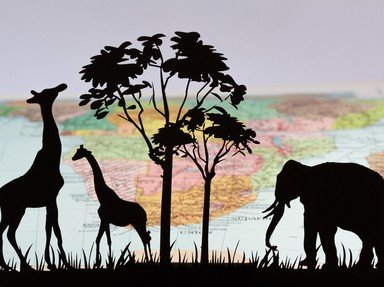Quiz Answer Key and Fun Facts
1. Which of these frog species is native to Colombia and is extremely poisonous?
2. Whales belong to the taxonomical order Cetacea. This order has two suborders, Mysticeti and Odontoceti. What do the whales of the Odontoceti order have that those of the Mysticeti order do not have?
3. What do raccoons often do with their food, so much so that the behaviour became part of their scientific name, Procyon lotor?
4. The Giraffe Centre in Langata, Kenya was created to protect which endangered subspecies of giraffe, which is also known as the Ugandan or Baringo giraffe?
5. A rooster is a male chicken. Which of these best describes what a capon is?
6. Which of the following animals does NOT move around by knuckle-walking?
7. Which of these is true regarding the sea otter in comparison to most other marine mammals?
8. The Danainae subfamily of butterflies, which includes the monarch butterfly, are also known by what name, due to where they lay their eggs and what their young feed on?
9. The hippopotamus secretes highly acidic compounds from its skin which is sometimes called "blood sweat". What is this for?
10. What kind of animal has the species name Branta canadensis?
Source: Author
guitargoddess
This quiz was reviewed by FunTrivia editor
Tizzabelle before going online.
Any errors found in FunTrivia content are routinely corrected through our feedback system.

